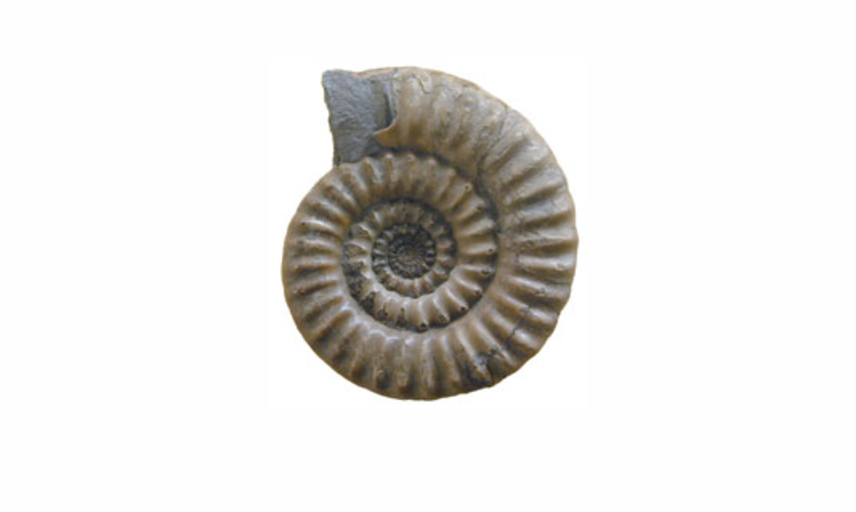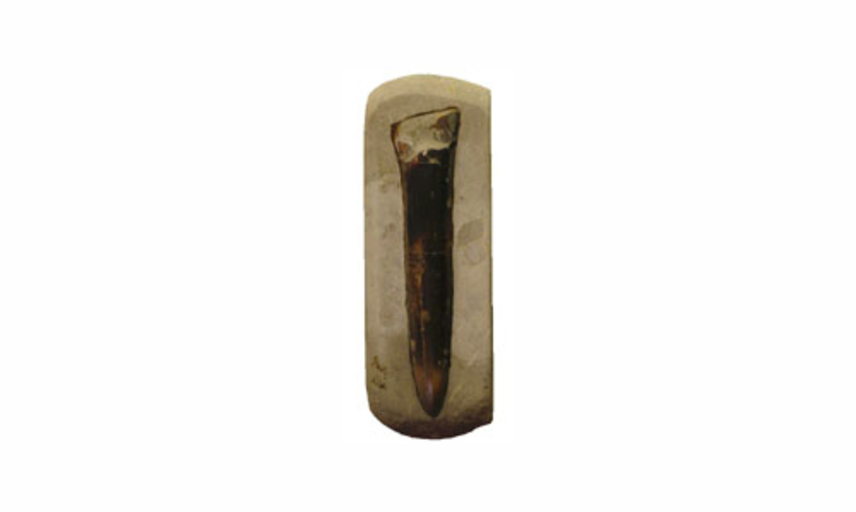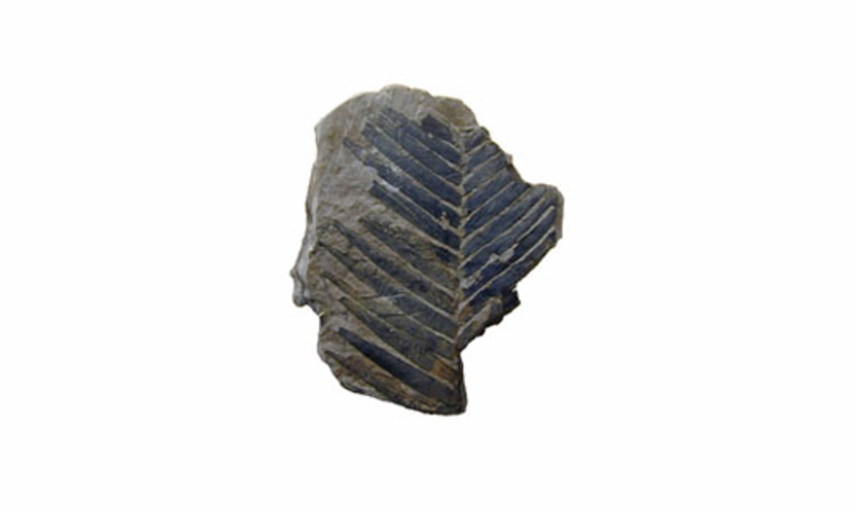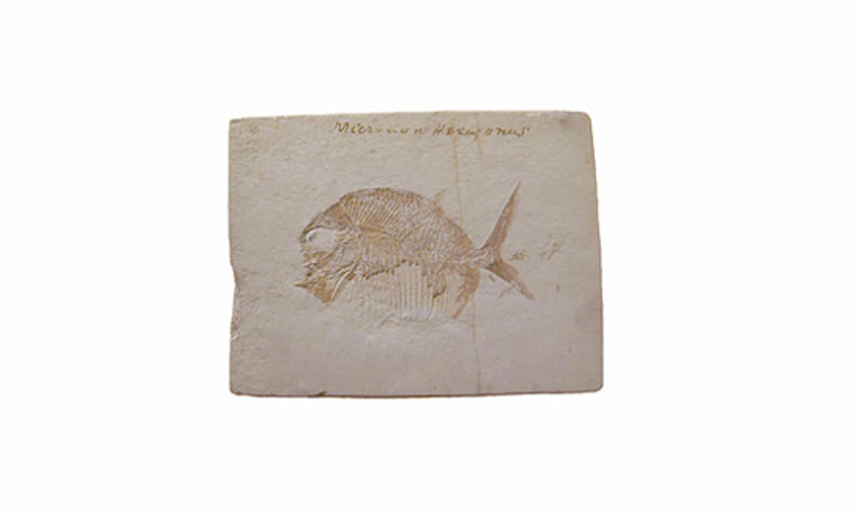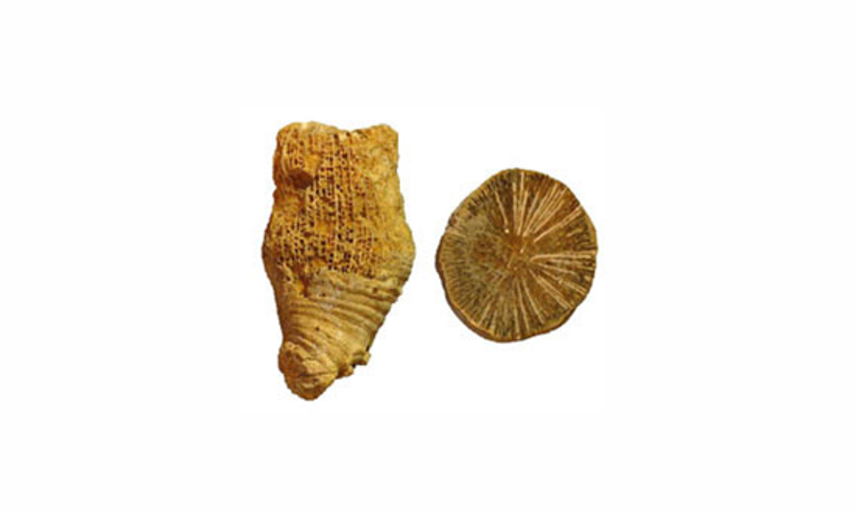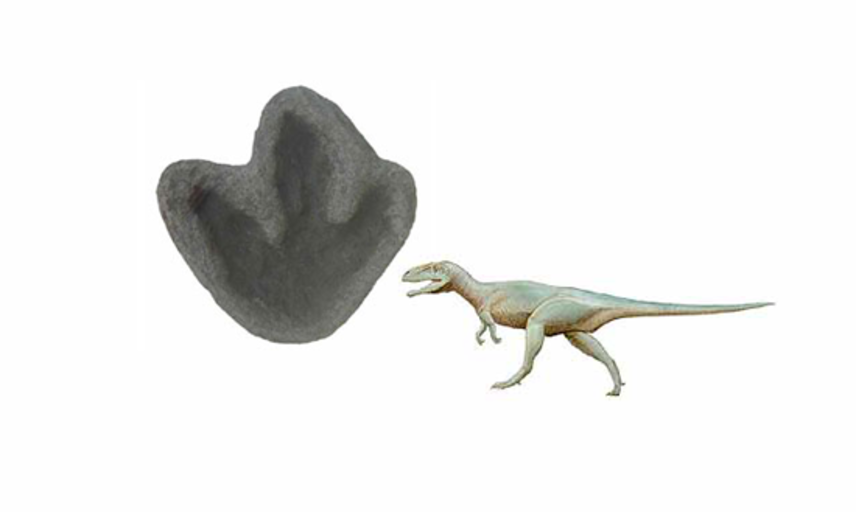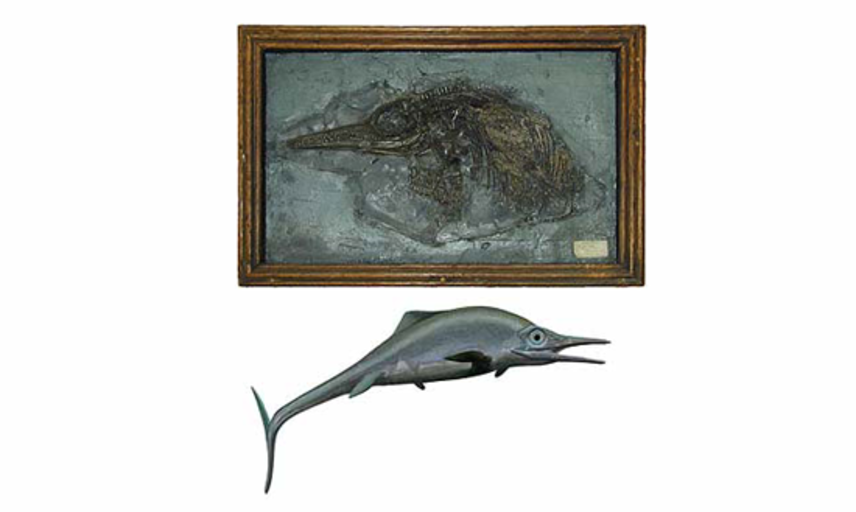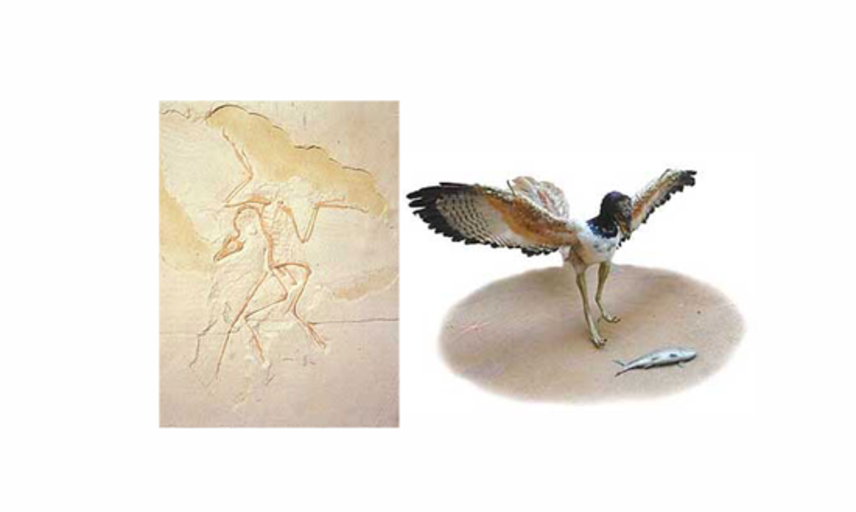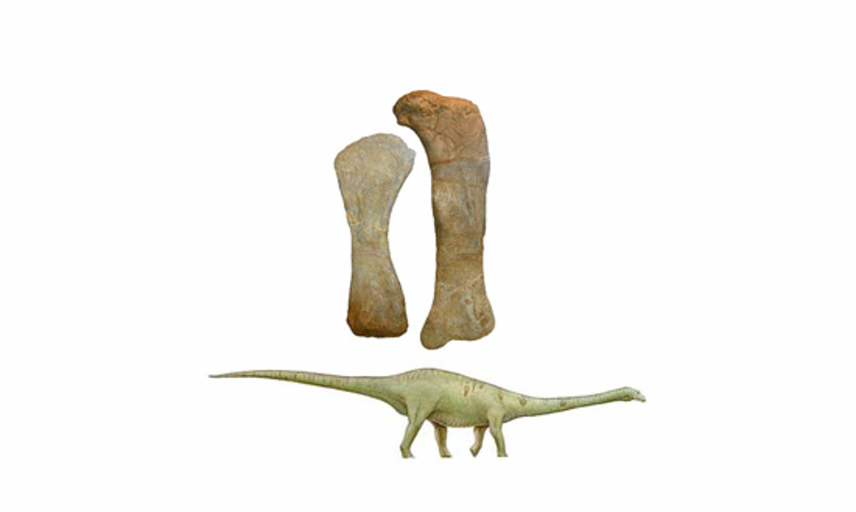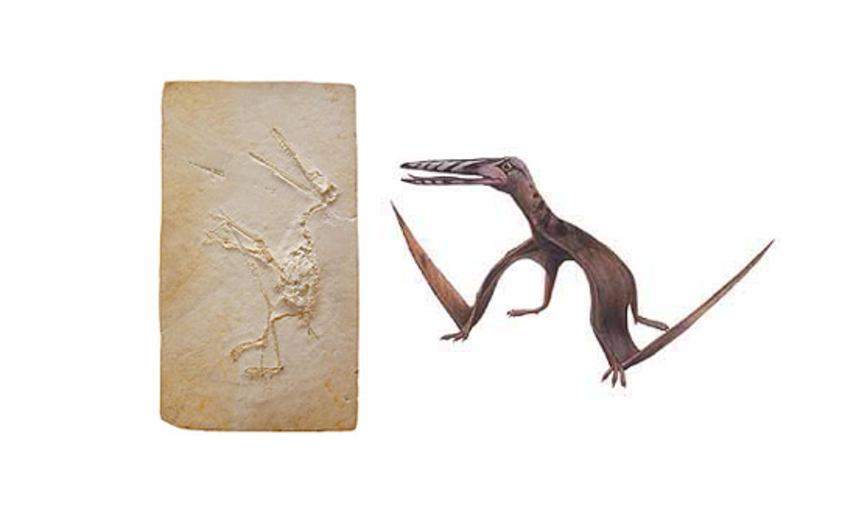The Jurassic
When: 206 to 144 million years ago.
Animals: Reptiles dominate land, sea and air. Dinosaurs - like the Oxford forms Eustreptospondylus and Cetiosaurus - are common; pterosaurs fly in the skies above; ichthyosaurs and other marine reptiles swim in the oceans. Echinoderms (sea lilies and star fish) and molluscs - like ammonites and belemnites - are common invertebrates in the oceans.
Plants: Forests of conifers (trees like pine trees) grew on the land.
Firsts: Flowers may have bloomed for the first time. Bony fish similar to most of those we see today, swim in the oceans, and Archaeopteryx and the first true birds appear.
Lasts: Most groups lived through the Jurassic into the Cretaceous.
Notes: Mammals were small and were insignificant compared with the dominant reptiles.
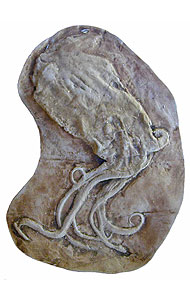
This is the fossil of a octopus-like animal called Proteroctopus. It was found in France and is about 164 million years old. The first real octopus appeared later, in the Cretaceous period.
A fossil like this one, where you can see soft parts of the animal (like the tentacles) are quite rare. Usually it is only the hard parts of an animal, like bones and teeth, that are fossilised.
Do you know what these fossils are?
About this resource
Science topic: Fossils, Rocks, Evolution
Key Stage: KS2
Type: Information, Activity
Keywords: Jurassic, Oxfordshire dinosaurs, Eustreptospondylus,
Cetiosaurus, Jurassic conifers

